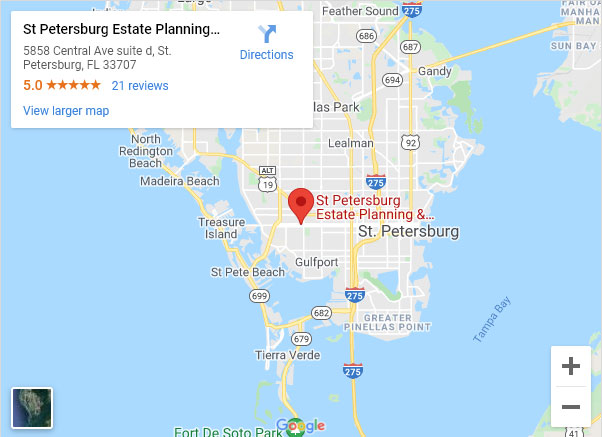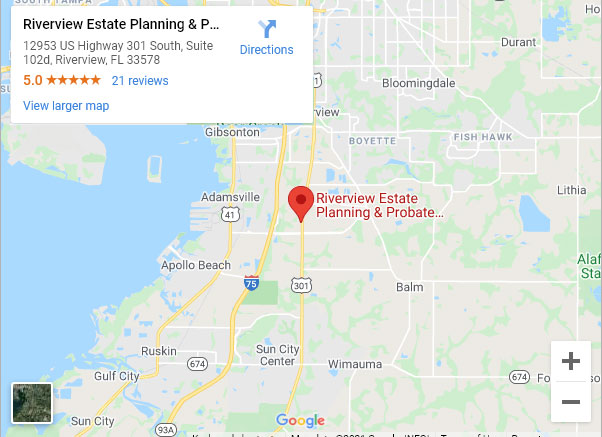As an owner of a retirement account (IRA), you can designate a trust as a beneficiary. Doing this can allow you to control how the asset is distributed after your death, but it does come with various knock-on effects. For that reason, it’s advised that you contact an Estate Planning attorney for specialist advice to see if it’s the optimal solution for you and your family.
In most cases, a married person will be recommended to name their spouse as the primary beneficiary of their retirement account and a trust as the second or alternate beneficiary.
Inherited IRA Law
In 2019, the ‘Secure Act’ changed the requirements for inherited IRAs. The most important things to pay attention to are:
- The classification of the individual or entity designated as a beneficiary
- The relationship they have with the deceased individual
- The age of the IRA owner at their death
Beneficiary Classification Categories
The Secure Act defines beneficiaries into the following categories:
- Eligible designated beneficiaries
- Designated beneficiaries
- Non-designated beneficiaries.
Eligible Designated Beneficiaries
The Secure Act requires that any eligible designated beneficiary withdraws the IRA account’s balance over the length of the beneficiary or owner’s life expectancy.
Any surviving spouse is allowed to ‘step into the shoes’ of the IRA owner and withdraw the IRA balance over their life expectancy. Alternatively, they can also roll the inheritance into their own retirement account.
Eligible designated beneficiaries include:
- Owner’s spouse
- Owner’s child(ren) less than 18 years of age
- Disabled individual
- Chronically ill individual
- Any other individual less than 10 years younger than the deceased IRA owner.
Read Related: How to Pass Retirement Accounts to Beneficiaries
Designated Beneficiaries
To be a designated beneficiary, the individual must be named as a beneficiary of the IRA, having not qualified as an eligible designated beneficiary (as listed above).
Designated beneficiaries must follow the ten-year rule, which requires they withdraw the balance of the IRA account within 10 years of the death of the owner.
Not Designated Beneficiaries
Not designated beneficiaries are typically those who are not individuals – such as trusts, charities and estates. Not designated beneficiaries have rules too, which are based on the age of the owner when they died:
- The five-year rule for owners that died younger than 72.
- The payout rule for owners that died aged 72 or older.
The five-year rule requires that the beneficiary withdraws the balance over the five years following the owner’s death.
The payout rule requires that the beneficiary withdraws the remaining balance over the owner’s remaining life expectancy.
How to Designate a Trust as a Beneficiary of an IRA?
In the U.S., you can designate a trust as a beneficiary. The first step is to determine the classification of the beneficiary. Doing so will ensure you decide if it’s the best option for you and ensure you follow all relevant rules.
With trusts, it is the trust’s beneficiary, rather than the trust itself, that determines the classification.
Trusts will typically be listed in two types; conduit trusts and accumulation trusts.
Using the categories above and below, you should be able to determine which definition is relevant to you.
Conduit Trusts
If the trust lists a specific beneficiary(s) to receive all of an IRA’s withdrawals, then that beneficiary is considered a direct beneficiary of the IRA.
This is called a ‘conduit trust’. It means the trust’s existence is ignored to determine the classification of the IRA beneficiary.
For example, if the trust’s beneficiary is an individual, the IRA is considered as having an eligible designated beneficiary or designated beneficiary.
However, when a trust lists its beneficiary as an estate or charity, then the IRA is considered as having no designated beneficiary.
Accumulation Trust
If the trust can accumulate withdrawals from the IRA and not distribute withdrawals entirely, then it is defined as an ‘accumulation trust’.
Accumulation trusts are used to share funds over time with the listed trust beneficiaries. Most types of accumulation trusts name estates or charities as a beneficiary. Because they’re not individuals, the trust is usually required to follow the five year-rule or the payout rule.
Read related: Does a Spouse Automatically Inherit Everything in Florida?
The Benefits of Designating a Trust a Retirement Account Beneficiary
There are various reasons why someone may designate a trust as a beneficiary of a retirement account. The primary reason is usually to gain further control over asset inheritance after death.
Avoiding Beneficiary Ownership Limitations
Naming a trust as an IRA beneficiary can be a way to work around beneficiary ownership limitations. For example, a minor is unable to legally own an IRA. Or, relatives with special needs may be at risk of losing government benefits if they own an asset.
By naming a trust as the IRA’s beneficiary, it will become the legal owner rather than the child or the individual with special needs.
Second Marriage or Family Structure Solutions
A retirement account owner may want to ensure that children from previous marriages and their current spouse receive a share of the funds.
This can be achieved by using a suitable trust. Contact an estate planning attorney to identify one that is optimal for your circumstances.
Limiting Access
You can also designate a trust as a beneficiary of a retirement account to restrict the amount an individual can withdraw.
Some people have the right to large distributions or even the entire balance of an IRA, but with a trust they will be forced to follow the terms of the trust instead.
Planning for Successive Beneficiaries
IRA beneficiaries can typically only name their initial successor.
But if you want to control future successors beyond the initial beneficiary, then you can name a trust as the IRA beneficiary instead and list your succession terms in it.
Creditor Protection
IRAs owned by individuals can protect funds from creditors, but it doesn’t always continue with inherited IRAs.
Instead, you can use a properly structured trust to limit the access creditors have to the retirement account.
Minimize Estate Taxes
Wealthy individuals often use trusts to minimize the impact of federal estate taxes. To determine what is possible for your family, please contact our Florida estate planning attorneys.
Required Minimum Distributions Rules for Trusts as IRA Beneficiaries
| Conduit Trusts | Accumulation Trusts | Other Trusts | |
| Key Trust Terms | Must distribute all IRA
distributions to an individual trust beneficiary when received |
Allows for the accumulation of
IRA distributions within the trust, rather than immediate payout |
Do not meet definition of see-
through trust; likely accumulate IRA distributions; identity of beneficiaries does not matter |
| RMD Distributions to the Trust | For an “eligible designated
beneficiary (EDB)”: Payout based on the life expectancy of the beneficiary (stretch IRA rules still apply) For a beneficiary that is not an EDB: 10-year Rule – 100% distribution to the trust within 10 years of the owner’s death |
10-year Rule – 100% distribution
to the trust within 10 years of the owner’s death |
If the IRA owner dies before age
72: 5-year Rule – 100% distribution to the trust within 5 years of the owner’s death the IRA owner dies at age 72 or later: Payout to the trust based on the actuarial life expectancy of the IRA owner, or the trust can elect to use the 5-year rule |
| Distributions to Trust Beneficiaries | Distributed immediately to
conduit beneficiary after trust receives IRA distributions Results in a non-EDB receiving 100% of the IRA proceeds by the end of year 10 |
Trust terms govern the timing of distributions to trust beneficiaries may be different than the timing and amounts of IRA distributions to
the trust |
Contact an Estate Planning Attorney Today
For support with designating a trust as a beneficiary of a retirement account, please feel free to contact our Florida estate planning attorneys for a free consultation.
Our estate planning lawyers regularly help Florida residents to protect their wealth and optimize estate planning for their family’s future.
Free Consultations
Battaglia, Ross, Dicus & McQuaid, P.A. is U.S. News and World Reports Tier 1 law firm in Florida, specializing in Estate Planning & Probate since 1958. With award-winning experienced estate planning attorneys, they can help you create a water-tight estate plan that protects your rights and wishes.
Schedule a free consultation today to get started.


















